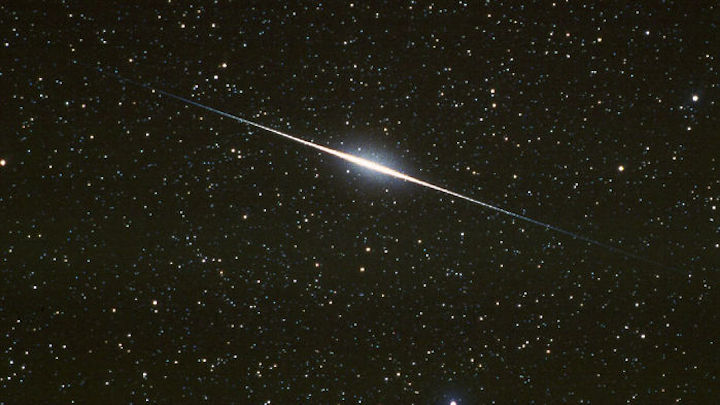17.03.2019

Iridium flares are a familiar sight for sky watchers: The brilliant flashes take place when sunlight bounces off the solar panels of the 66 low-orbiting satellites in the iridium communications system. Now, a researcher involved in the search for extraterrestrial intelligence wonders what similar flashes farther out might mean—perhaps a shiny alien artifact or spacecraft?
To find out, he calculated what a shiny “technosignature” might look like. He started with the observation that even though a reflective surface can be seen from a long way off, our ability to see it from Earth depends on the surface area, which way it is oriented, whether it is spinning, and the sensitivity of Earth-bound telescopes. The Panoramic Survey Telescope and Rapid Response System (Pan-STARRS1), a 1.8-meter telescope on Haleakala in Hawaii that scans the sky for potentially threatening near-Earth objects, for example, could spot a mirror the size of a coaster out to 1 astronomical unit, the distance between the sun and Earth, if it was rotating slowly. For Pan-STARRS1 to see a fast-rotating mirror at the same distance, it would need to be the size of a tennis court.
Given these variables, the researcher estimates there would need to be millions of mirrors across the inner solar system to see one in a single Pan-STARRS1 exposure, he reports today on the arXiv preprint server. Those chances might go up by focusing on Lagrange points, gravitational sinkholes where alien detritus might accumulate. If only a few hundred mirrors were present, a much smaller telescope could spot one. But the fact that we haven’t seen such flashes yet suggests any alien visitors—if they are out there—are doing a good job of cleaning up after themselves.
Quelle: Science
